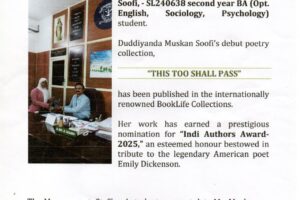
Inter department study tour
Post Programme Summary
Activity: Inter department study tour
Date: 20-21st January 2020
Every subject requires a field based exposure to understand the reality beyond the walls of our classroom. Keeping this in mind, the teaching staffs and students of third year BA went on a two days study tour to Belur, Halebidu, Manjarabad fort and places around Mangalore. The journey began from our campus on 20th January, 2020 at 5 am accompanied with the in charge teachers Dr. Prakash Arulappa, Mr. Anand , Dr. Sowmya, and Ms Panchama . The team reached St. Joseph first Grade College, Hassan for the breakfast. The group was received with a warm welcome and the food was well served. The team first visited Halebidu, the established capital of Hoysalas and reached Hoysaleshwara temple which is dedicated to lord Shiva built in 12th centaury on the banks of a manmade lake by Ketamalla, the commander of king Vishnuvardhana. It is the largest monument and a rich cultural heritage in Halebidu. The Hoysaleshwara temple is a dvikoota or a twin temple dedicated to Shantaleshwara and Hoysaleshwara shiva lingas named after king Vishnuvardhna and his queen Shantaladevi. The tourist guide explained about the uniqueness of art and architecture of the sculptures. This place enlightened the students about the culture, food habits, dress codes, ornaments worn by the people during that era. It helped the students to witness and appreciate the craftsmanship of the builders and their foresightedness. Our journey proceeded towards Chennakeshava temple at Belur. This temple was commissioned by king Vishnuvardhana in 1117CE on the banks of Yagachi river in Belur. The temple was built over three generations and it took nearly 103 years to complete. The temple is an ekakoota temple dedicated to hindu god Vishnu. King Vishnuvardhana built this temple to mark his conversion to Sri Vaishnavism after coming under the influence of Ramanujacharya. This temple is considered to be an epitome of Hoysala architecture. We saw the intricate carvings of the temple and our history professor explained us the uniqueness of this temple architecture, process of building etc. This place enhanced our knowledge to a large extent. The team headed towards Sakleshpura, a hill station in Hassan district, has a temperate climate surrounded with lofty green hills full of coffee, cardamom, pepper and areca plantations. After having a delicious lunch the team visited to Manjarabad Fort which is located on the outskirts of Sakleshpur. Manjarabad fort is a star shaped European styled fort built in 1792 by Tippu Sultan, the then ruler of Mysore using French military architects. The fort is located on a hill at an elevation of 988 meters giving a clear commanding view of the surroundings. The completed fort was inspected by Tippu Sultan who then found it enveloped in fog and hence named it as Manjarabad fort; the name Manjara is a corrupted version of ‘manju’ meaning ‘fog or mist’ in kannada. It served as the second line defence for the Tippu’s territory. There is a hollow entrance in the centre, which is said to the entrance of a tunnel leading to Srirangapattana. The fort is maintained by the Department of Archaeology. The students were able to get a picture of the strategic geographic and military planning of our early rulers. Thinking about the hard work, ideas of ancient times, the team headed towards Mangalore and reached Panambur beach which is one of the top tourist attractions of Mangalore. The students and staffs enjoyed the magnificent sunset and enjoyed the beauty of sea shore. The accommodation was arranged in Fathima retreat centre at Jeppu, Mangalore. Our second day started with a delicious breakfast and we visited St. Aloysius College Museum popularly called as Aloyseum which was established in the year 1913 by an Italian Jesuit priest named Chiapi who donated 2000 different types of minerals, herbarium and a collection of roman coins. The museum houses the first car ‘De Dion’ skeletons and specimens of different animals, domestic and agricultural utensils, coins, currency notes etc. used in ancient times. The wonderful attraction in the college campus was St. Aloysius college Chapel built by the Italian Jesuit Antonio Moscheni in 1884. The interior of the chapel is decorated with paintings by Antonio Moscheni that covers almost all the walls with fresco and canvas paintings. The paintings depict the life of Jesus and his disciples, Jesuit saints and life of St. Aloysius. This chapel is considered as a replica of world renowned Sistine Chapel at Rome and is the richest heritage place in Mangalore. Further we visited Pilikula Nisargadhama the most wonderful attraction of this place is they have recreated Artisan or Heritage village which displays the Tulunadu culture. This village portrays ancient Tulunadu traditions, culture, dance forms, house, handicrafts, cuisine etc. There are live demonstrations of traditional pottery, carpentry, sculpturing, oil processing, basket weaving, handlooms and blacksmiths which the students enjoyed most seeing it practically. A 3D film show at Vivekananda planetarium, which is first and the only 3D Planetarium in India gave lot of information about space craft. There were different exhibition in this center which covers all the branches of science. The botanical museum and lake consisting of 70 texa endemic to Western Ghats region. The museum not only contains threatened species but also a few species that had been considered extinct. The wonderful refreshing of the day was visit to Pabbas Ice cream Parlour, well known for its ice creams and their innovative names they give to their ice creams. We visited Fathima church and Tannirbhavi beach where students enjoyed the site of sea. Next the team went to Sultan Battery where a watch tower built by Tipu Sultan in the year 1784. It is built of black stones and constructed to obstruct war ships from entering the river which was the major route for English invasion but was then retrieved from English by Tippu Sultan. It was used as a fort with mounting places for cannons to avoid Britishers to enter Mangalore by sea. The last visiting place of the day was to Kudroli Gokarnanatha, a temple dedicated to Gokarnanatha, a form of lord Shiva built in 1912 by Adhyaksha Hoige Bazar Koragappa. After refreshing and dinner at Fathima retreat center the team heart fully thanked the Jesuit priests of the retreat centre for their support and care. Overall the tour was so refreshing and it provided lot of information about the history of our country especially south Karnataka, different rulers, their dynasties, culture, art, architecture, social life of ancient times.
Study Tour photographs
Activity: Inter department study tour on 21-22nd January 2020
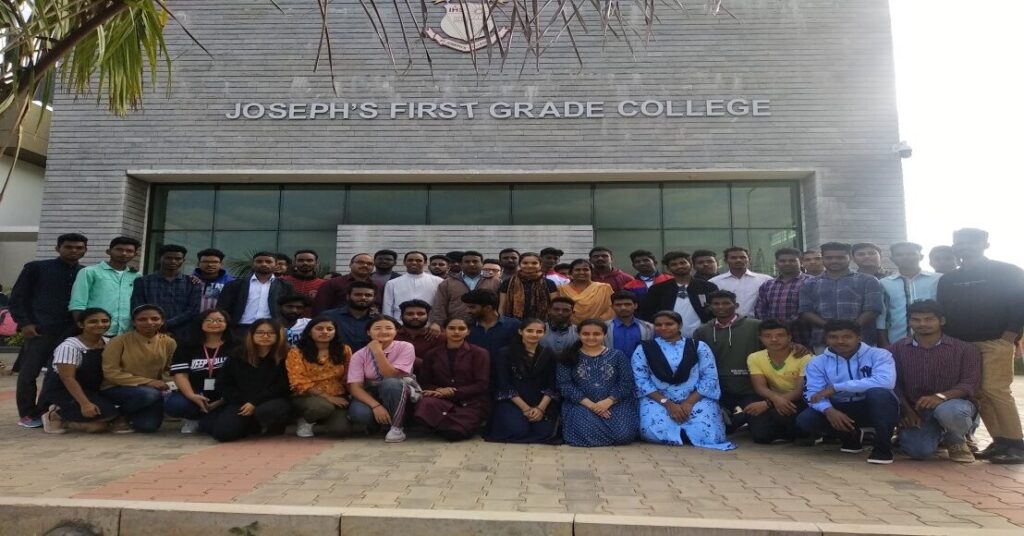
St. Joseph’s First Grade College, Hassan
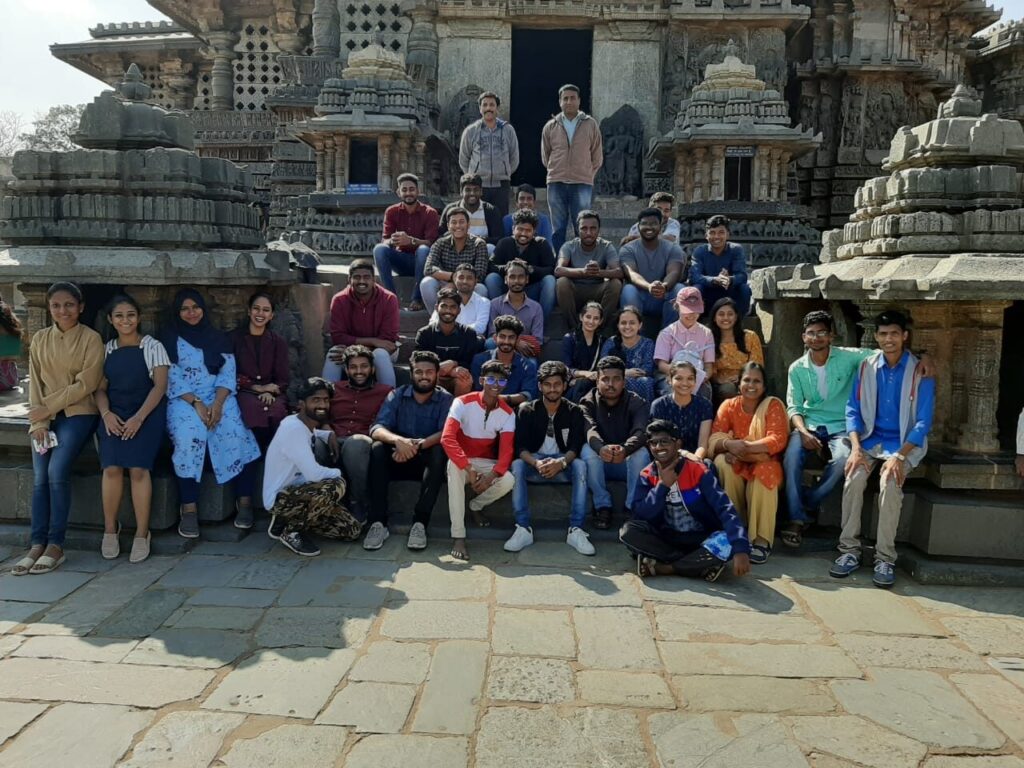
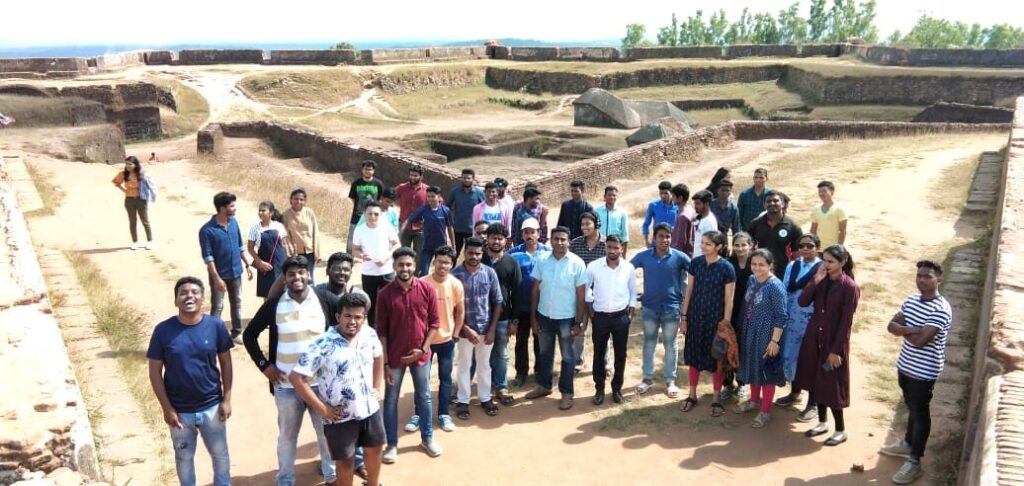
Hoysaleshwara temple, Halebidu Chennakeshava temple, Belur
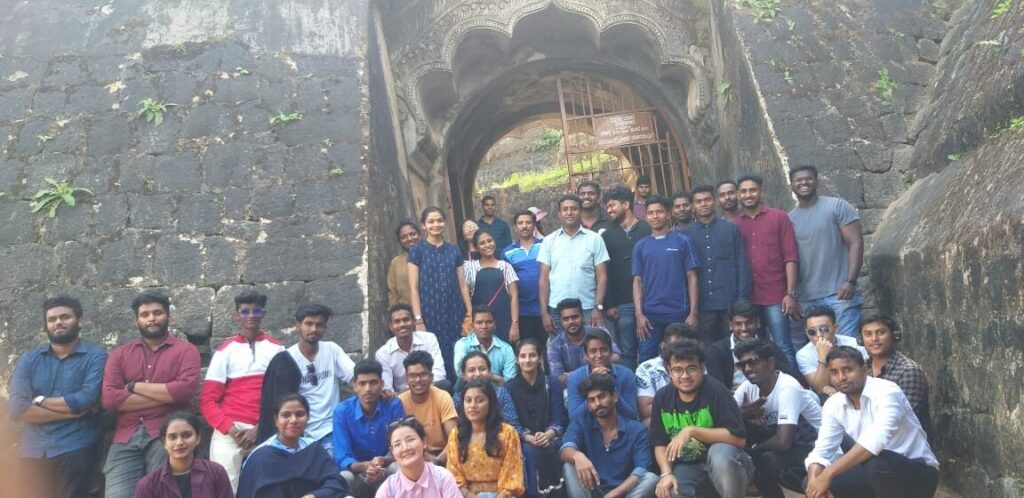
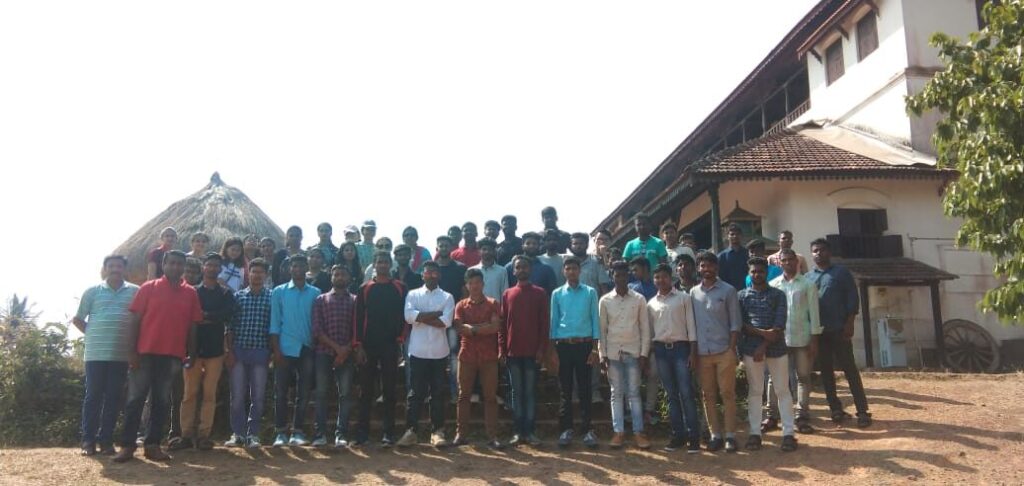
Manjarabad fort, Sakleshpur

St. Aloysius Museum

Pilikula Nisargadhama, Mangalore
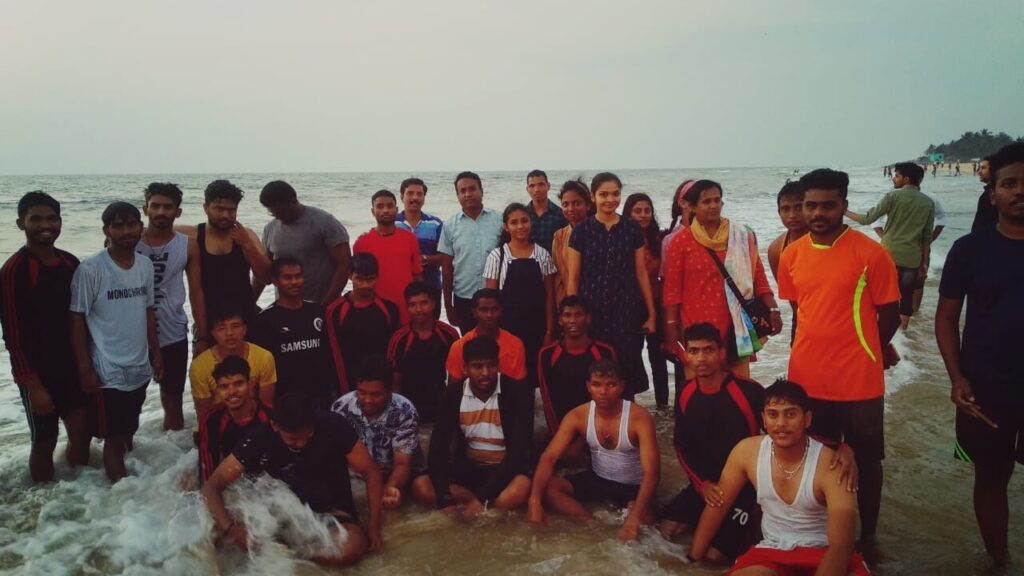
Panambur beach, Mangalore

